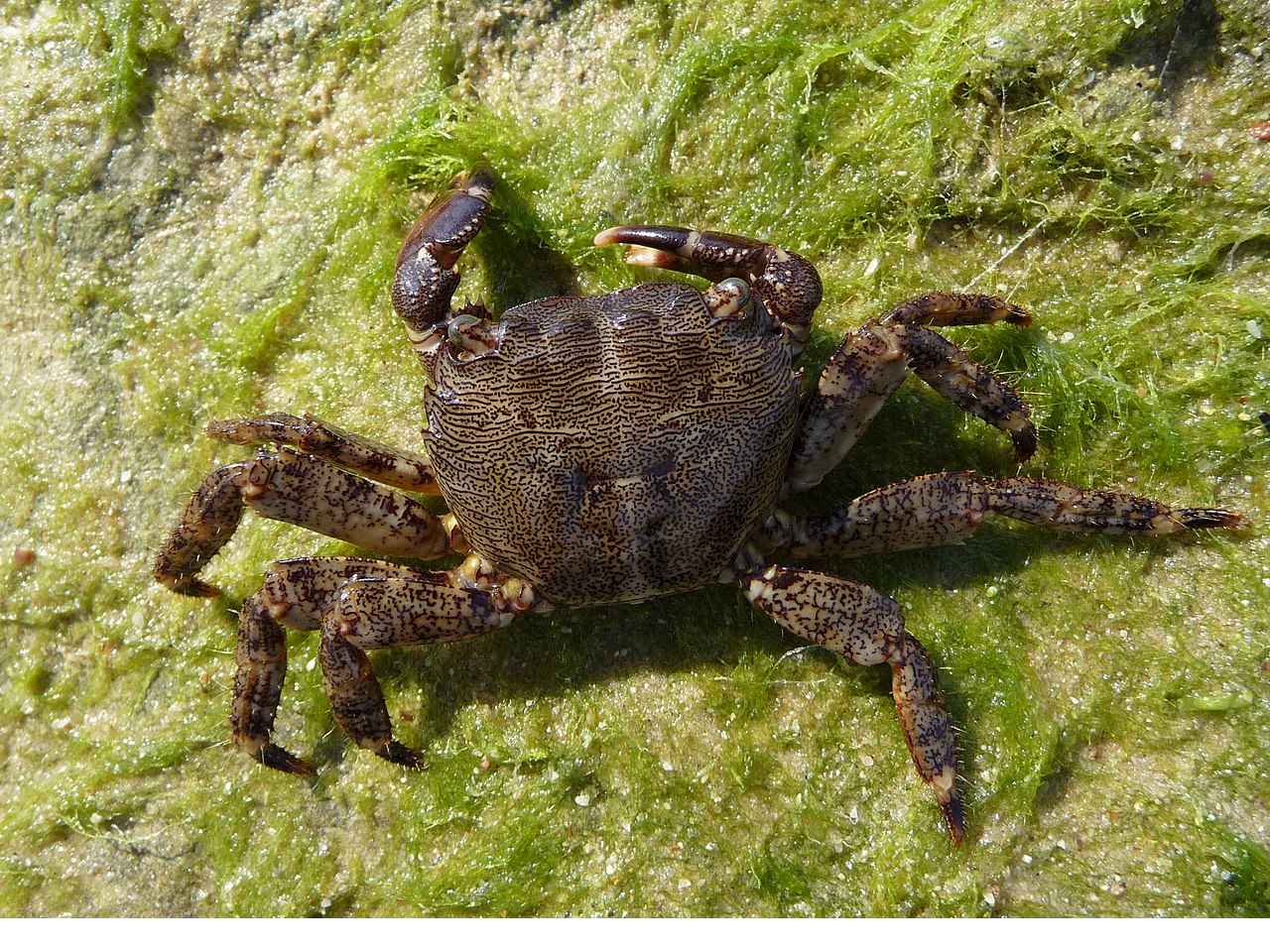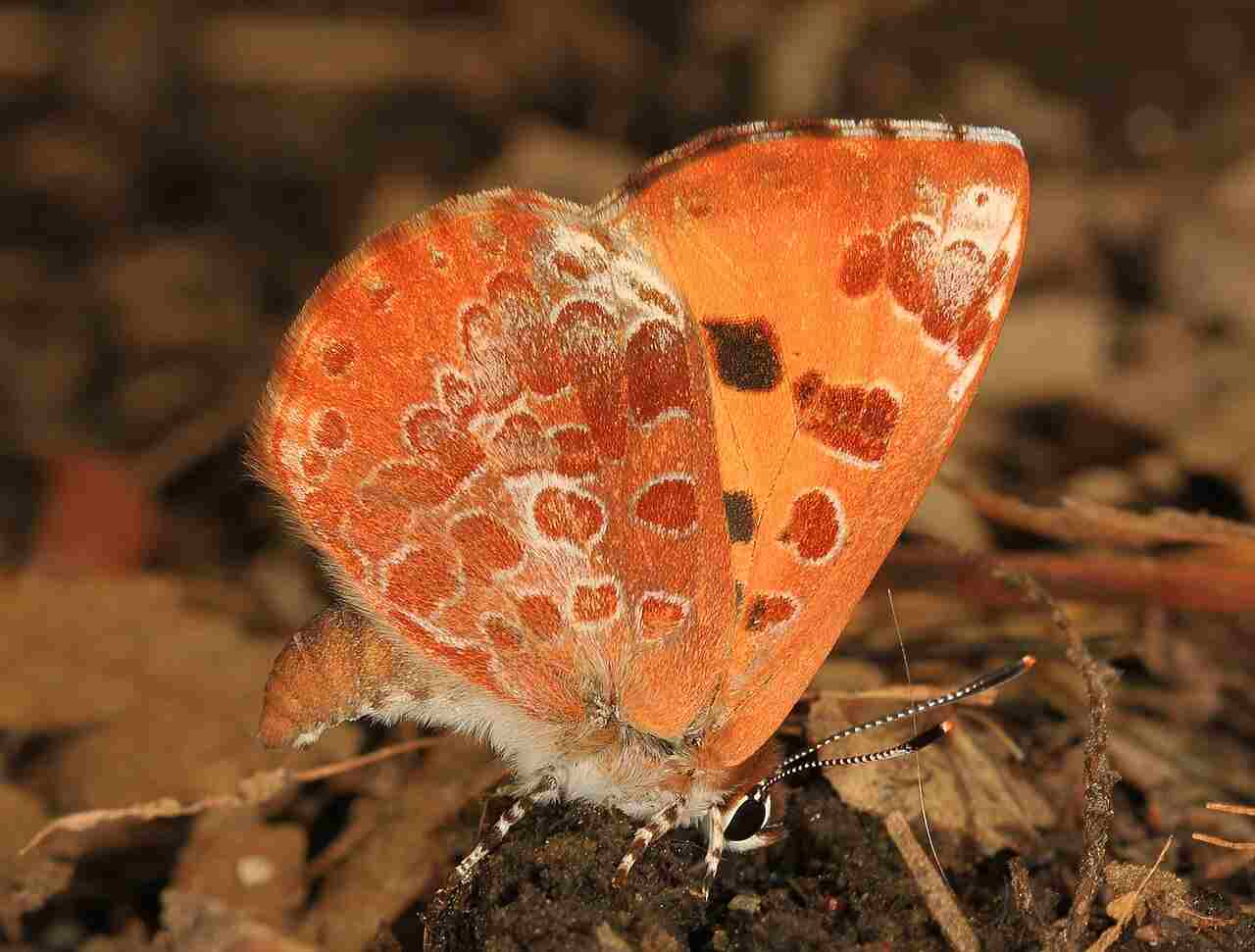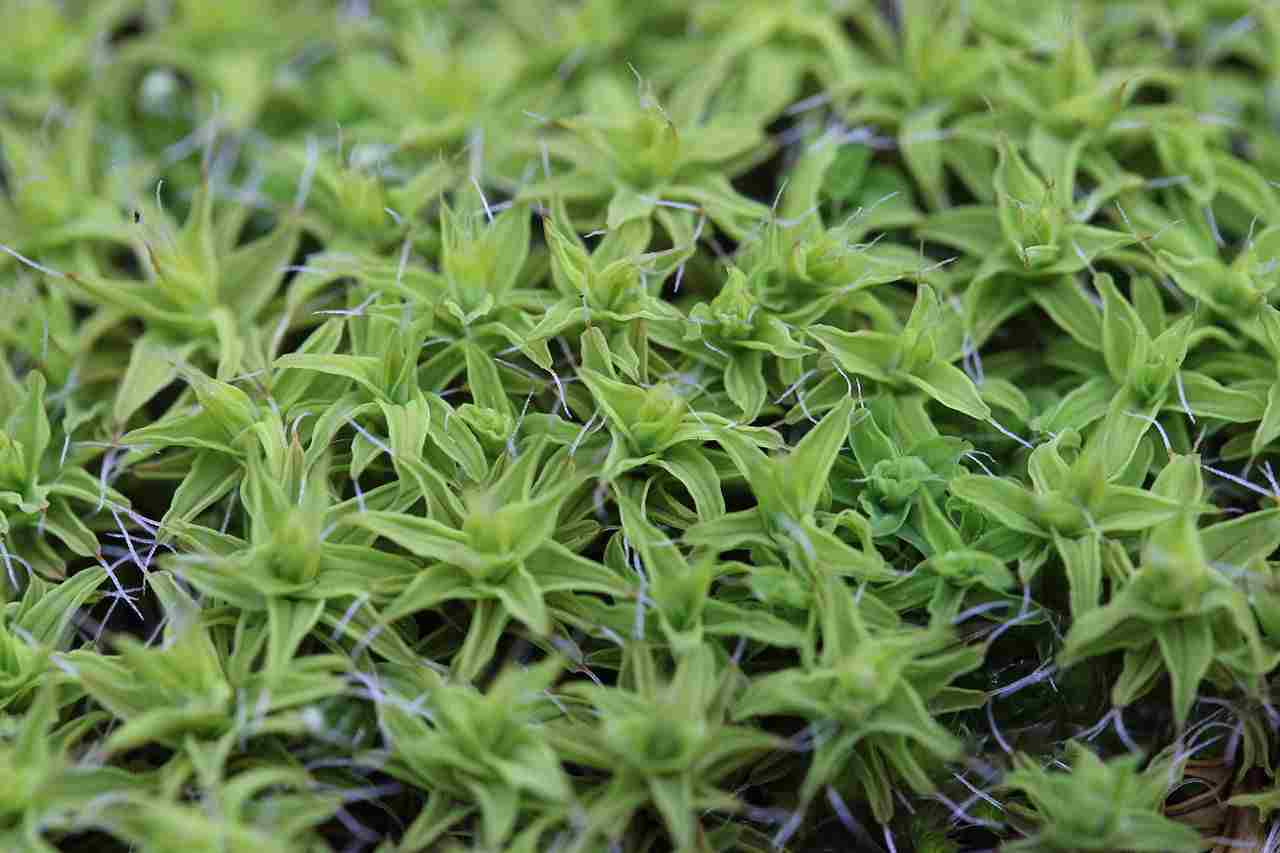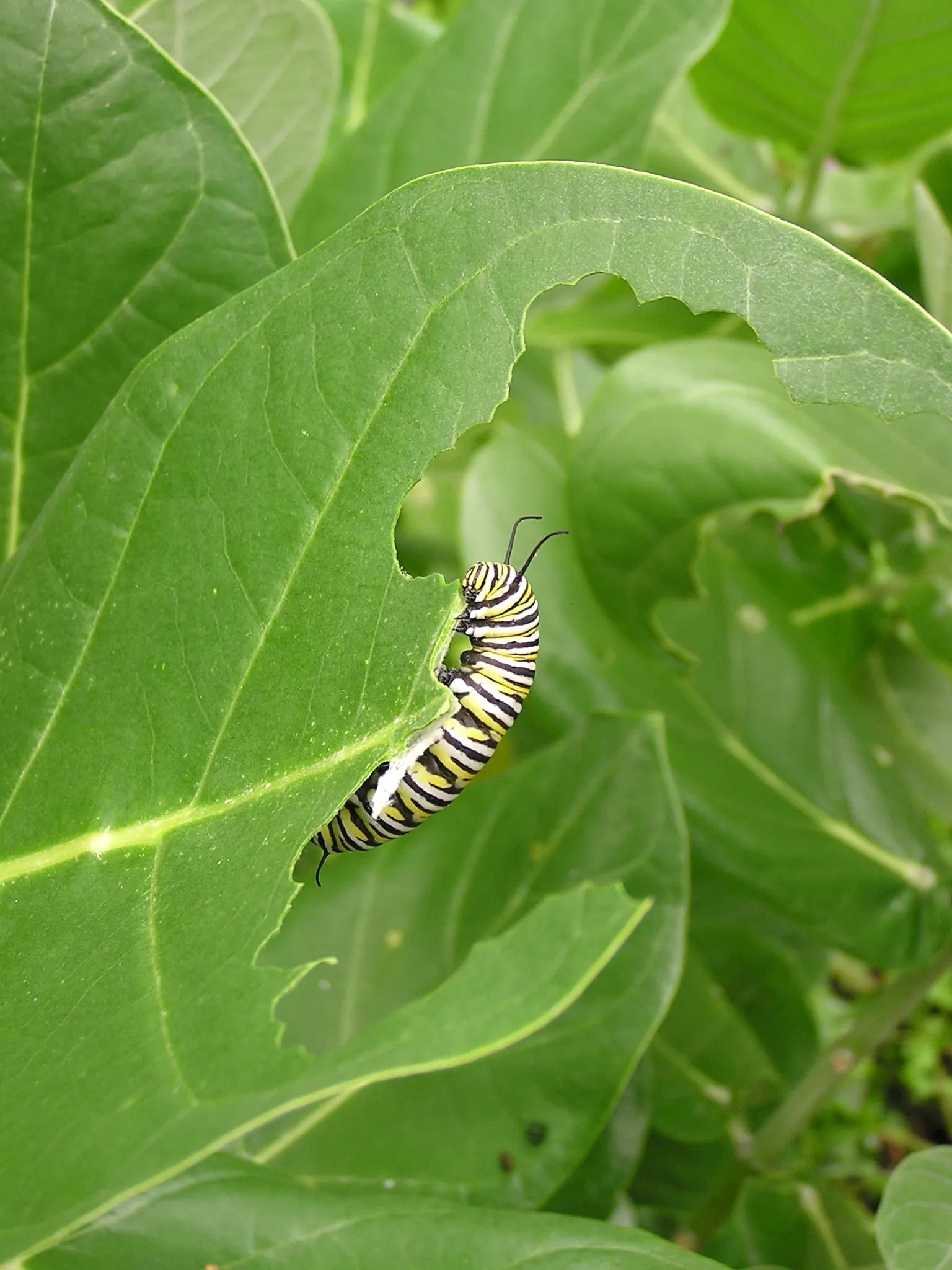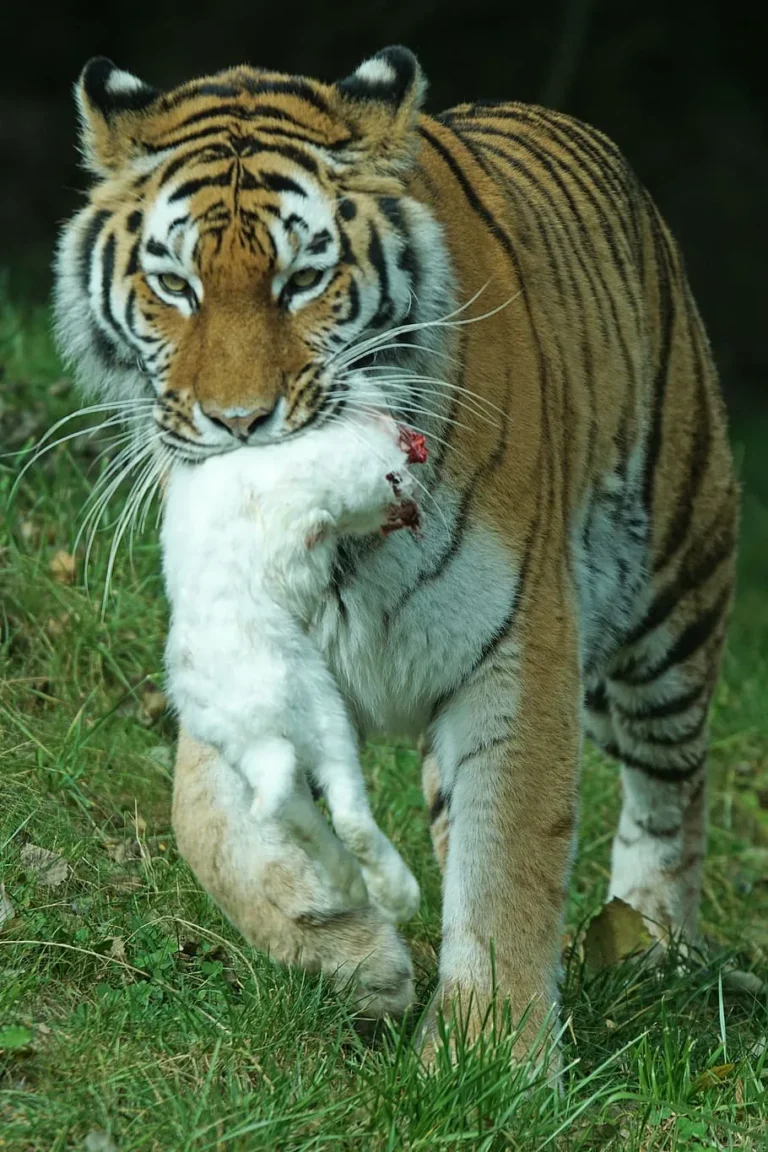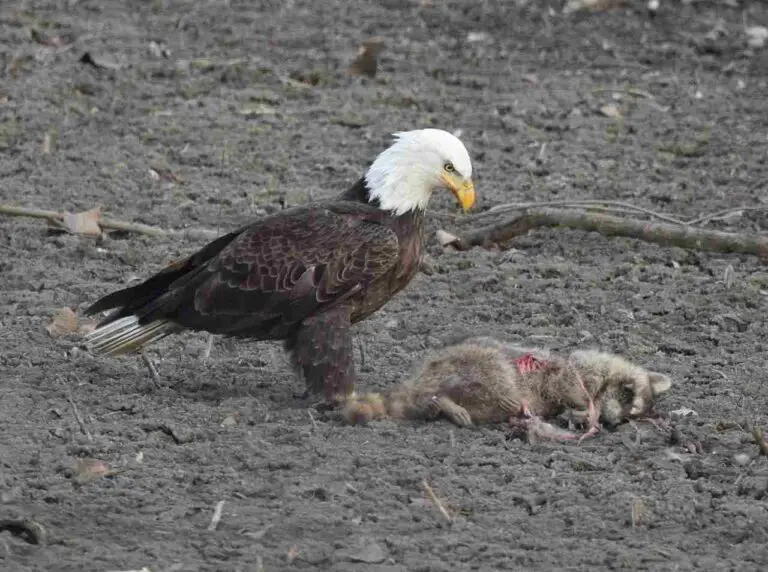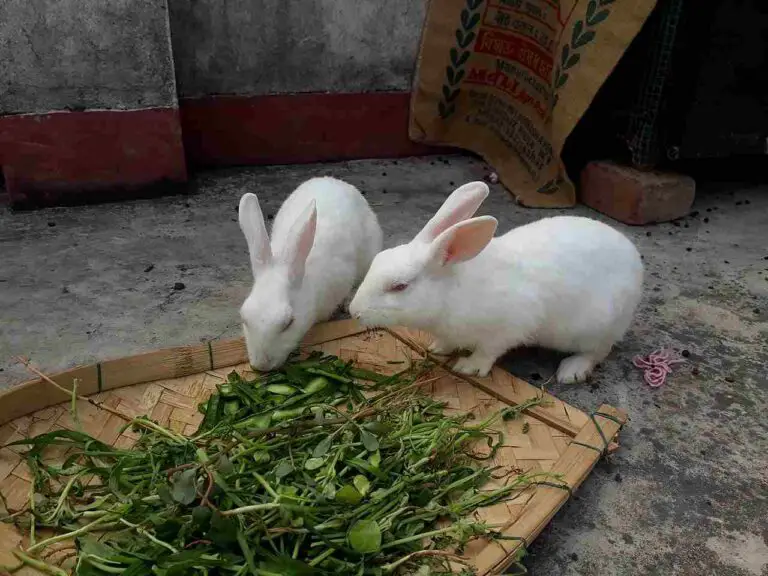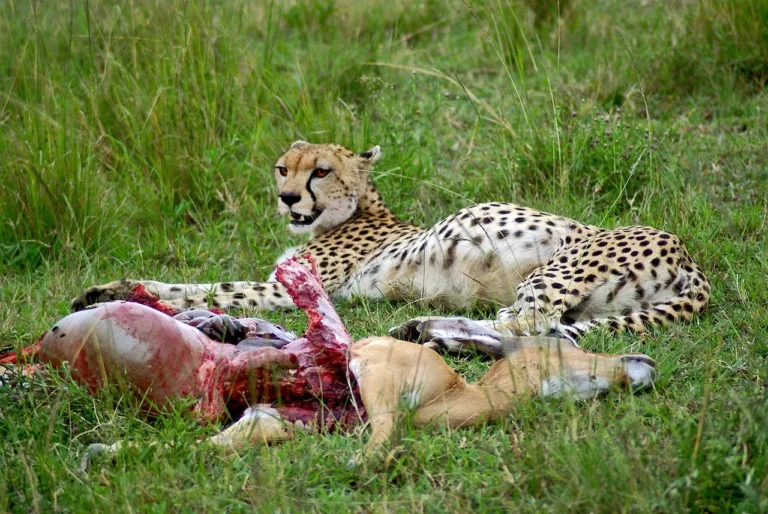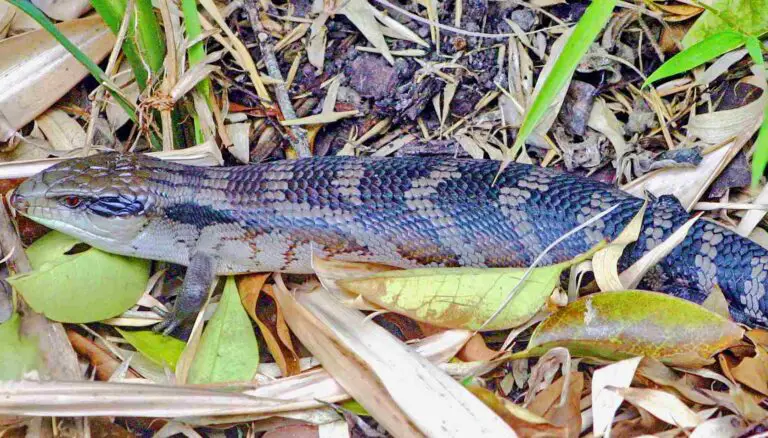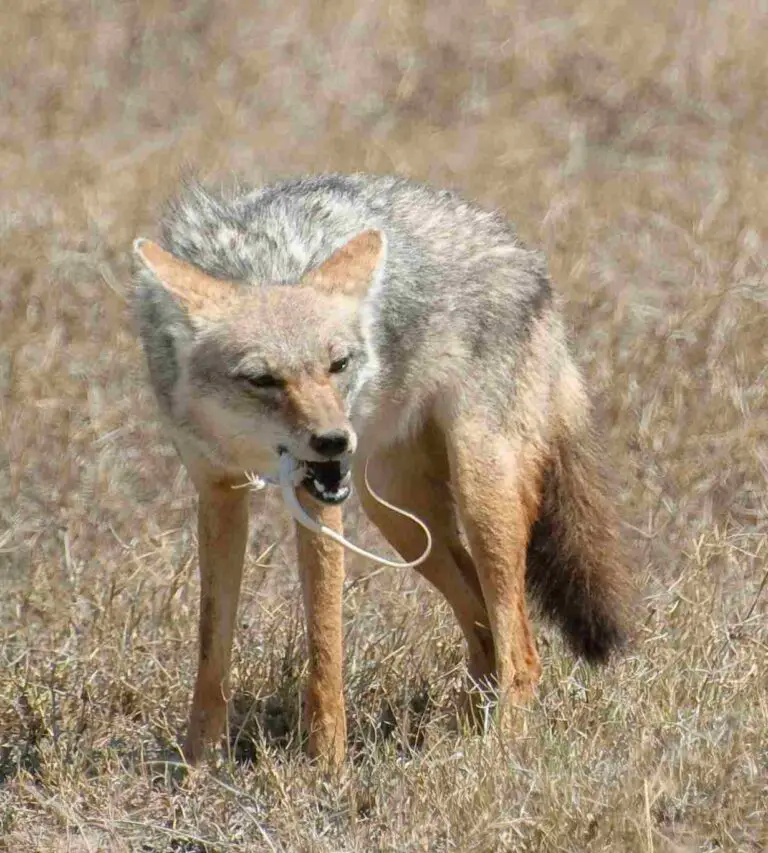Is a Caterpillar a Consumer? Discussing the Role of Caterpillars in the Food Chain
A caterpillar is a consumer because it must consume other organisms or biogenic materials to acquire the nutrients and energy necessary for its survival.
Is a Caterpillar a Producer?
A caterpillar is not considered a producer in the food chain. Unlike plants and other organisms classified as producers, caterpillars do not have the ability to synthesize organic compounds or manufacture their own food through photosynthesis. This fundamental characteristic sets them apart from producers in the ecosystem.
Producers, such as plants, algae, and some bacteria, are capable of converting sunlight into energy through the process of photosynthesis. They use this energy to synthesize organic compounds, such as sugars and carbohydrates, which serve as their source of nutrition. In contrast, caterpillars rely on consuming other organisms or biogenic materials to acquire the nutrients and energy necessary for their survival.
Caterpillars are herbivores, meaning they primarily feed on plants. They have specialized mouthparts that allow them to chew and consume plant material. By feeding on producers, caterpillars obtain the necessary nutrients, such as carbohydrates, proteins, and fats, to support their growth and development.
In addition to their feeding habits, caterpillars lack the typical characteristics associated with producers. Unlike plants, they do not possess chloroplasts or other structures necessary for photosynthesis. They also do not have the ability to convert sunlight into energy or produce oxygen as a byproduct.
Instead, caterpillars play an important role as consumers in the food chain. They serve as a food source for other organisms, such as birds, reptiles, and other insects. By consuming plant material, caterpillars transfer energy and nutrients from producers to higher trophic levels in the ecosystem.
Reasons Why a Caterpillar is Not a Producer
1. Inability to Synthesize Organic Compounds
Caterpillars are fascinating creatures that play an important role in the food chain. However, they are not considered producers. One reason for this is their inability to synthesize organic compounds.
In order to be classified as a producer, an organism must be capable of photosynthesis or chemosynthesis. This process involves converting sunlight or inorganic compounds into energy-rich organic compounds, such as glucose. While plants and some bacteria have the ability to perform photosynthesis, caterpillars do not possess this capability.
Caterpillars rely on consuming organic matter, specifically plant material, for their energy needs. They feed on leaves, stems, and other parts of plants, extracting nutrients and energy from these sources. This makes them consumers rather than producers in the food chain.
Furthermore, caterpillars lack the necessary structures and enzymes to carry out photosynthesis. They do not have chloroplasts, the organelles responsible for capturing sunlight and converting it into energy. Without these essential components, caterpillars are unable to synthesize organic compounds on their own.
In addition to their inability to produce their own food, caterpillars also lack other typical characteristics of producers. Producers are usually stationary organisms, rooted in the ground or attached to a substrate. They have specialized structures, such as roots or rhizomes, that allow them to absorb water and nutrients from the environment. Caterpillars, on the other hand, are mobile and do not possess these characteristics.
2. Caterpillars Feed On Producers
Caterpillars feed on producers, which is one of the reasons why they are not considered producers themselves. In the food chain, producers are organisms that can synthesize their own food through processes like photosynthesis or chemosynthesis. However, caterpillars rely on consuming organic matter, specifically plant material, for their energy needs.
Plants are the primary producers in most ecosystems. They have the ability to convert sunlight into energy-rich organic compounds through photosynthesis. Caterpillars, on the other hand, do not possess this capability. Instead, they feed on leaves, stems, and other parts of plants, extracting nutrients and energy from these sources.
Caterpillars play an important role as herbivores in the food chain. They consume plant material, breaking it down and extracting the necessary nutrients for their growth and development. By feeding on producers, caterpillars transfer energy from plants to higher trophic levels in the food chain.
In addition to their feeding habits, caterpillars lack the necessary structures and enzymes to carry out photosynthesis. They do not have chloroplasts, the organelles responsible for capturing sunlight and converting it into energy. Without these essential components, caterpillars are unable to synthesize organic compounds on their own.
Furthermore, caterpillars exhibit other characteristics that are not typically found in producers. Producers are usually stationary organisms, rooted in the ground or attached to a substrate. They have specialized structures, such as roots or rhizomes, that allow them to absorb water and nutrients from the environment. Caterpillars, on the other hand, are mobile and do not possess these characteristics.
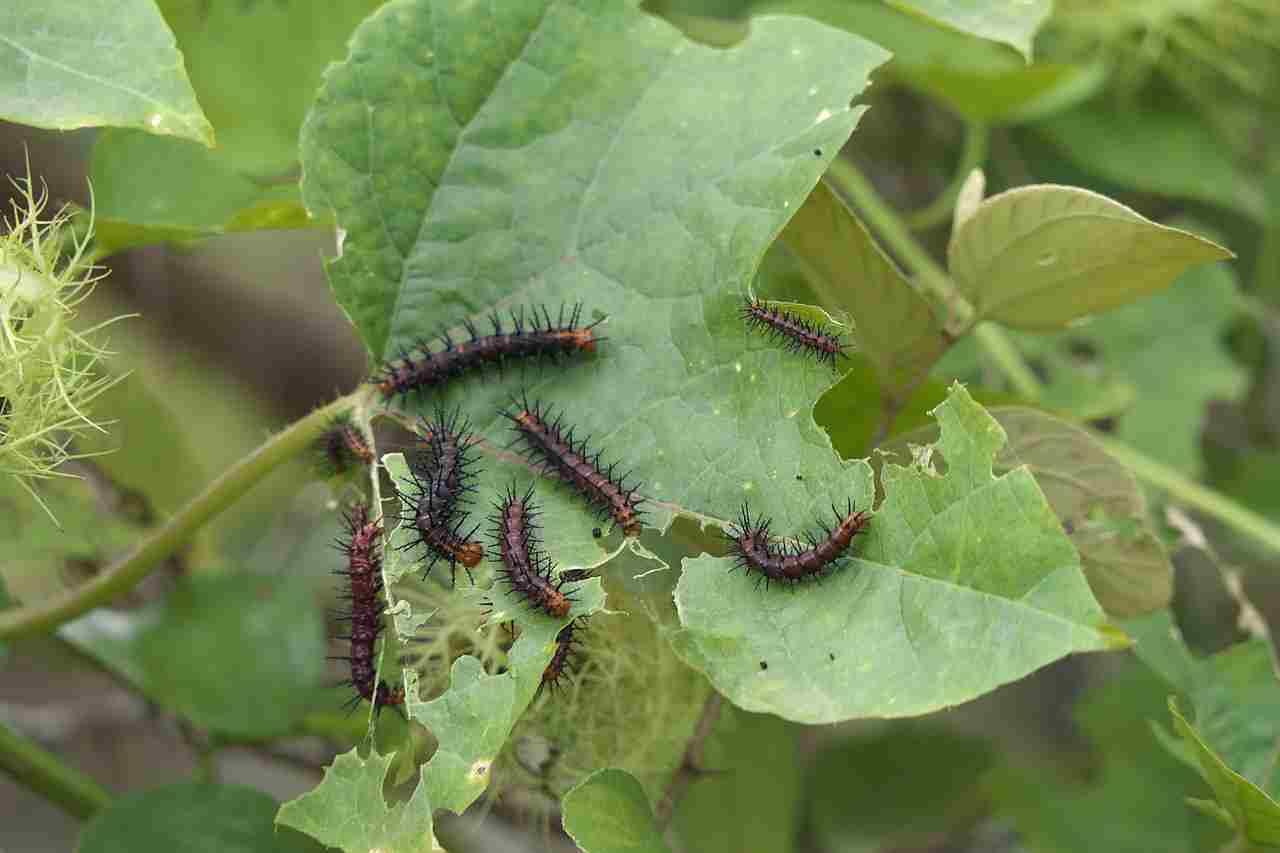
3. Typical Producer Characteristics are Not Found in Caterpillars
One of the reasons why caterpillars are not considered producers is that they lack the typical characteristics associated with producers. Producers, such as plants, have specific traits that allow them to synthesize their own food through processes like photosynthesis or chemosynthesis. However, caterpillars do not possess these abilities and rely on consuming organic matter for their energy needs.
Unlike plants, caterpillars do not have the necessary structures and enzymes to carry out photosynthesis. They lack chloroplasts, which are responsible for capturing sunlight and converting it into energy-rich organic compounds. Without this essential component, caterpillars are unable to produce their own food.
Furthermore, producers are usually stationary organisms, rooted in the ground or attached to a substrate. They have specialized structures, like roots or rhizomes, that allow them to absorb water and nutrients from the environment. In contrast, caterpillars are mobile creatures that move from one location to another in search of food. They do not possess these stationary characteristics commonly found in producers.
Another characteristic that differentiates caterpillars from producers is their feeding behavior. Producers, such as plants, are autotrophs and can synthesize their own food using energy from the sun or other sources. Caterpillars, on the other hand, are heterotrophs and rely on consuming organic matter, specifically plant material, for their energy needs. They feed on leaves, stems, and other parts of plants, extracting nutrients and energy from these sources.
What Type of Consumer is a Caterpillar?
Caterpillars can be classified as primary consumers in the food chain. Their main food source is plants, making them herbivores. They primarily feed on leaves, stems, and other parts of plants, extracting nutrients and energy from these sources. This feeding behavior categorizes them as primary consumers, as they consume producers directly.
Unlike secondary or tertiary consumers, which feed on other consumers, caterpillars rely on plants as their primary source of nutrition. They play a crucial role in the food chain by consuming plant material and transferring energy from plants to higher trophic levels. This makes them an important link in the ecosystem, as they serve as a food source for other organisms.
While caterpillars primarily consume plants, some species may also engage in detritivorous activity. Detritivores feed on detritus, which includes dead plant material and decomposing organic matter. Although this behavior is not as common among caterpillars, some species may occasionally feed on plant waste or decomposing plant litter. However, it is important to note that this detritivorous activity is less significant compared to their primary herbivorous behavior.
In terms of their position in the food chain, caterpillars are considered primary consumers. They consume producers directly, obtaining energy from plants. This energy is then transferred to higher trophic levels when caterpillars are consumed by secondary consumers, such as birds or other insect-eating animals.
Are Caterpillars Decomposers?
While caterpillars primarily function as primary consumers in the food chain, some species may engage in detritivorous activity, which involves feeding on detrital organic matter. This behavior may lead to the misconception that caterpillars are decomposers. However, it is important to note that this detritivorous activity is not as significant as their primary herbivorous behavior, and caterpillars are generally considered primary consumers.
Caterpillars, as primary consumers, obtain their energy by consuming plants directly. They feed on leaves, stems, and other plant parts, extracting nutrients and energy from these sources. This feeding behavior categorizes them as herbivores and places them in the role of primary consumers in the food chain. They play a crucial role in transferring energy from plants to higher trophic levels, serving as a vital link in the ecosystem.
While some caterpillars may occasionally feed on detritus, such as dead plant material or decomposing plant litter, this behavior is not as common or significant as their primary herbivorous behavior. The detritivorous activity of caterpillars can be considered a secondary behavior, and it does not define them as true decomposers. Instead, it is their primary consumption of plants that characterizes them as primary consumers.
In terms of their position in the food chain, caterpillars occupy the role of primary consumers. They consume producers directly, obtaining energy from plants. This energy is then transferred to higher trophic levels when caterpillars are consumed by secondary consumers, such as birds or other insect-eating animals. Their primary herbivorous behavior and their contribution to energy transfer make them an essential component of the food chain.
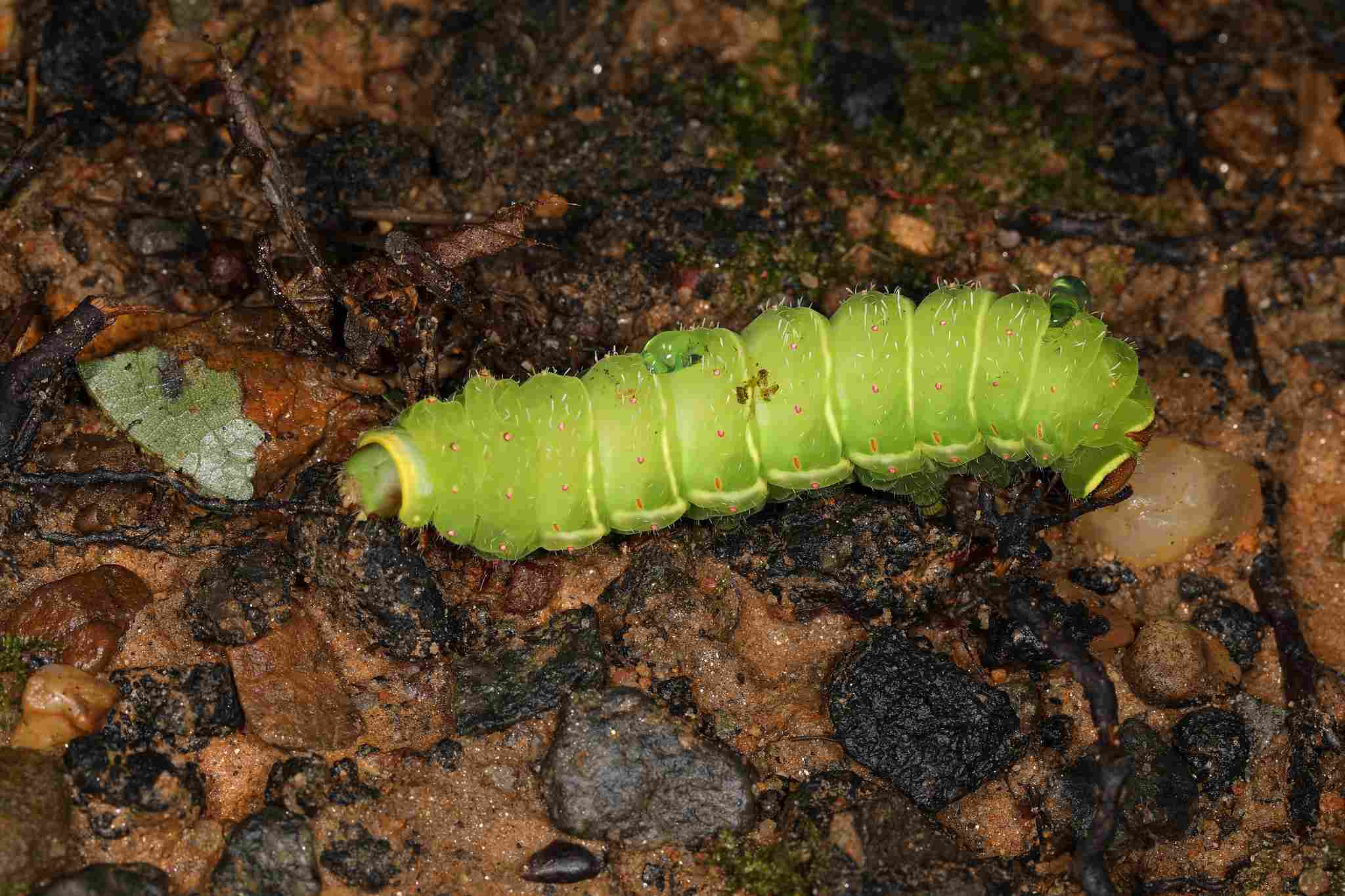
Why Caterpillars are Not True Decomposers
1. Less-Significant Detritivorous Activity
One reason why caterpillars are not considered true decomposers is their less-significant detritivorous activity.
Detritivores play a crucial role in the decomposition process by breaking down dead organic matter into smaller particles. While caterpillars do consume plant material, their contribution to the decomposition process is relatively limited compared to other detritivores such as earthworms or beetles.
Caterpillars primarily feed on living plant material, such as leaves, stems, and flowers. They have specialized mouthparts that allow them to chew and consume plant tissues. However, their digestive systems are not optimized for breaking down dead organic matter.
When caterpillars consume plant material, they extract nutrients and energy for their own growth and development. The remaining undigested plant matter is excreted as waste. Unlike true decomposers, caterpillars do not actively break down dead organic matter into simpler compounds.
While some caterpillars may inadvertently consume small amounts of dead plant material along with living plant material, their detritivorous activity is not their primary function. Their role in the food chain is primarily as herbivorous consumers, rather than as core facilitators of the biodegradation process.
2. Caterpillars Do Not Contribute Directly to Decomposition
Caterpillars, despite their role as herbivorous consumers, do not contribute directly to the decomposition process. While they consume plant material, their primary function is not to break down dead organic matter into simpler compounds.
One reason why caterpillars are not considered true decomposers is their limited detritivorous activity. Unlike other detritivores such as earthworms or beetles, caterpillars have a less-significant role in the biodegradation process. Their digestive systems are not optimized for breaking down dead organic matter.
Caterpillars primarily feed on living plant material, such as leaves, stems, and flowers. They have specialized mouthparts that allow them to chew and consume plant tissues. When caterpillars consume plant material, they extract nutrients and energy for their own growth and development. The remaining undigested plant matter is excreted as waste.
While some caterpillars may inadvertently consume small amounts of dead plant material along with living plant material, their detritivorous activity is not their primary function. They are not core facilitators of the biodegradation process. Instead, their role in the food chain is primarily as herbivorous consumers, feeding on producers and transferring energy to higher trophic levels.
3. Non-Saprophytic Characteristics
Another reason why caterpillars are not considered true decomposers is their non-saprophytic characteristics. Saprophytic organisms play a crucial role in the decomposition process by breaking down dead organic matter and absorbing the nutrients released. However, caterpillars do not possess the necessary adaptations to fulfill this role effectively.
Unlike saprophytic organisms such as fungi or bacteria, caterpillars do not have the ability to secrete enzymes that break down complex organic compounds. These enzymes are essential for the decomposition process as they help convert dead organic matter into simpler forms that can be absorbed by other organisms. Caterpillars, on the other hand, rely on their specialized digestive systems to extract nutrients from living plant material.
Furthermore, caterpillars lack the ability to actively seek out and consume dead organic matter. Saprophytic organisms are typically opportunistic, feeding on decaying plant or animal material. Caterpillars, however, primarily feed on fresh plant material, such as leaves and stems. Their feeding habits are focused on obtaining the necessary nutrients for growth and development, rather than breaking down dead organic matter.
Additionally, caterpillars have specific adaptations that are not conducive to saprophytic behavior. For example, they have mandibles or chewing mouthparts that are designed to consume plant material. These mouthparts are not well-suited for breaking down dead organic matter, which often requires specialized structures like proboscises or mouthparts adapted for sucking or piercing.
What Eats Caterpillars in the Food Chain?
Caterpillars play an important role in the food chain as a food source for various organisms. They are consumed by a wide range of animals, including lizards, frogs, toads, beetles, birds, foxes, wasps, mice, and squirrels. These animals are mostly secondary consumers, meaning they obtain their energy by consuming other organisms.
When caterpillars are consumed by these secondary consumers, the nutrients and energy stored in their bodies are transferred to the higher consumers at the tertiary and quaternary levels of the food chain. This transfer of nutrients and energy is essential for the overall functioning and balance of the ecosystem.
Lizards, frogs, and toads are among the primary predators of caterpillars. These reptiles and amphibians have adapted to hunt and consume caterpillars as part of their diet. They use their specialized feeding mechanisms, such as long tongues or sticky saliva, to catch and consume caterpillars.
Beetles, both adults and larvae, also feed on caterpillars. Some beetle species have evolved specific adaptations to prey on caterpillars, such as sharp mandibles or chemical defenses to overcome the caterpillar’s own defenses.
Birds, including species like sparrows, warblers, and chickadees, are known to feed on caterpillars. They play a crucial role in controlling caterpillar populations, especially during the breeding season when they need to provide food for their young.
Foxes, although primarily carnivorous, also include caterpillars in their diet. They may consume caterpillars opportunistically when other food sources are scarce.
Wasps are another group of insects that prey on caterpillars. Some wasp species lay their eggs on or inside caterpillars, and the developing wasp larvae feed on the caterpillar as they grow.
Mice and squirrels are small mammals that may feed on caterpillars when they come across them. While caterpillars may not be a primary food source for these animals, they can still be consumed as part of their varied diet.
FAQs
1. Is a Caterpillar a Producer or Consumer?
A caterpillar is a consumer and not a producer. It lacks the ability to manufacture its own food through the process of photosynthesis. Instead, caterpillars rely on consuming organic matter for their energy and nutrients.
Caterpillars are herbivores, feeding on plants and plant parts such as leaves, stems, and flowers. They play an important role in the food chain as primary consumers, converting plant material into energy that can be passed on to other organisms.
Unlike producers, caterpillars do not possess the necessary characteristics for photosynthesis. They lack chloroplasts, the organelles responsible for capturing sunlight and converting it into energy. Additionally, caterpillars do not have the ability to synthesize organic compounds like carbohydrates, proteins, and lipids.
2. Is a Caterpillar a Consumer or a Decomposer?
A caterpillar is primarily a consumer in the food chain. It obtains its energy and nutrients by consuming organic matter, specifically plants and plant parts. As a herbivore, caterpillars feed on leaves, stems, and flowers, playing the role of a primary consumer.
Although caterpillars are mainly consumers, they can occasionally exhibit detritivorous feeding and scavenging behaviors. This occasional feeding on dead plant material and decaying organic matter might lead to the misconception that caterpillars are decomposers. However, it is important to note that this detritivorous activity is less significant compared to their primary role as consumers.
Unlike true decomposers, such as bacteria and fungi, caterpillars do not contribute directly to the decomposition process. They lack the specialized enzymes and microorganisms necessary for breaking down complex organic compounds into simpler forms. Additionally, caterpillars do not exhibit saprophytic characteristics, which are commonly associated with decomposers.
3. Is A Caterpillar a Herbivore?
Yes, a caterpillar is indeed a herbivore. In most cases, caterpillars primarily feed on plant matter as their main source of energy and nutrients. They have specialized mouthparts that allow them to chew and consume leaves, stems, and flowers of various plants.
Caterpillars play a crucial role as herbivores in the food chain. By consuming plant material, they act as primary consumers, converting the energy stored in plants into their own growth and development. This makes them an essential part of the ecosystem, as they help to control plant populations and maintain the balance of the natural environment.
It is important to note that while caterpillars are herbivores, there are some exceptions to this general rule. Certain species of caterpillars may exhibit omnivorous behavior, consuming both plant material and other small organisms such as insects or even other caterpillars. However, the majority of caterpillars are specialized herbivores, relying solely on plants for their nutrition.
4. Is a Caterpillar a Producer?
No, a caterpillar is not a producer. Caterpillars lack the ability to synthesize organic molecules, which is a key characteristic of producers in the food chain. Producers, such as plants, algae, and some bacteria, are capable of converting sunlight into energy through the process of photosynthesis. They use this energy to produce organic compounds, such as glucose, which serve as the foundation for the entire food chain.
Caterpillars, on the other hand, rely on consuming organic matter, specifically plant material, to obtain the energy and nutrients they need for growth and development. They do not have the necessary structures or metabolic processes to produce their own food. Instead, caterpillars have specialized mouthparts that allow them to chew and consume leaves, stems, and flowers of various plants.
By feeding on producers, caterpillars play a vital role as primary consumers in the food chain. They convert the energy stored in plants into their own biomass, serving as a source of food for higher-level consumers. This makes them an important link in the transfer of energy and nutrients through the ecosystem.
5. Is a Caterpillar a Secondary Consumer?
No, a caterpillar is not a secondary consumer. Instead, it is considered a primary consumer in the food chain. Caterpillars feed on producers, such as plants, and obtain their energy and nutrients from these sources. They are not predatory and do not consume other animals as their primary food source.
Caterpillars serve as a crucial link between producers and higher-level consumers in the food chain. They convert the energy stored in plants into their own biomass, making them an important food source for secondary consumers. These secondary consumers, such as lizards and amphibians, prey on caterpillars to obtain the energy and nutrients they need for survival.
In the ecosystem, the energy and nutrients flow from producers to primary consumers (caterpillars), and then to secondary consumers (lizards and amphibians). This transfer of energy and nutrients through different trophic levels is essential for maintaining the balance and stability of the food chain.
It’s important to note that while caterpillars are primary consumers, they can also play a role as decomposers to some extent. When caterpillars die or shed their skin, their remains contribute to the organic matter in the environment. This organic matter can then be broken down by decomposers, such as bacteria and fungi, further enriching the soil and recycling nutrients.
6. Is a Caterpillar a Decomposer?
A caterpillar is not a typical decomposer like exclusive detritivores or saprophytes. While it may occasionally scavenge and act as a detritivore, it does not play a significant role in decomposition processes.
Unlike true decomposers, such as bacteria and fungi, caterpillars do not have the specialized digestive enzymes necessary to break down organic matter. Their primary diet consists of plant material, which they consume as herbivores. Caterpillars feed on leaves, stems, and other parts of plants, extracting nutrients and energy from these sources.
Although caterpillars contribute to the organic matter in the environment through their waste and shed skin, their role in decomposition is limited. They do not directly break down dead plant material or contribute to the breakdown of organic matter in the same way that decomposers do.
Instead, caterpillars primarily function as primary consumers in the food chain, converting the energy stored in plants into their own biomass. They serve as an important link between producers and higher-level consumers, providing a source of energy and nutrients for secondary consumers.
7. Is Caterpillar a Primary Producer?
No, caterpillars are not primary producers. They are heterotrophs, which means they cannot produce their own food through photosynthesis like primary producers do. Instead, caterpillars rely on consuming organic matter, specifically plant material, to obtain the energy and nutrients they need to survive.
Caterpillars are herbivores, feeding on leaves, stems, and other parts of plants. They extract the nutrients and energy stored in these plant tissues to fuel their growth and development. However, they do not have the ability to synthesize organic compounds from inorganic sources like primary producers do.
In the food chain, primary producers, such as plants and algae, are the organisms that convert sunlight into chemical energy through photosynthesis. They form the base of the food chain by providing energy and nutrients to other organisms. Caterpillars, on the other hand, occupy a higher trophic level as primary consumers, feeding directly on the primary producers.
8. What is the Secondary Consumer of the Caterpillar?
There are organisms that feed on caterpillars, making them the secondary consumers in the caterpillar’s food chain. These secondary consumers are directly above the caterpillar in the food chain and may prey on it. Some examples of secondary consumers that feed on caterpillars include birds, frogs, toads, lizards, and even foxes.
Birds are known to be voracious predators of caterpillars. They have keen eyesight and can easily spot caterpillars crawling on leaves or branches. Birds swoop down and snatch up caterpillars as a source of food. Similarly, frogs and toads are also known to feed on caterpillars. These amphibians have long, sticky tongues that they use to catch and consume caterpillars.
Lizards are another group of secondary consumers that prey on caterpillars. They are agile climbers and can easily navigate through vegetation to find their prey. Lizards use their sharp teeth to capture and devour caterpillars. Additionally, foxes, although not commonly associated with caterpillar predation, have been observed to eat caterpillars when other food sources are scarce.
These secondary consumers play an important role in regulating the population of caterpillars in the ecosystem. By feeding on caterpillars, they help to control their numbers and prevent overpopulation. This, in turn, helps to maintain a balanced and healthy ecosystem.
9. What Type of Consumer is a Caterpillar in the Food Chain?
A caterpillar is considered a primary consumer in the food chain. As a primary consumer, it feeds on producers, which are typically plants. Caterpillars have a specialized diet consisting mainly of leaves, flowers, and other plant parts. They use their strong jaws to chew and consume plant material.
Caterpillars play an important role in the food chain as primary consumers. They convert the energy stored in plants into their own biomass, which can then be passed on to other organisms in the ecosystem. This makes them a vital link between producers and higher-level consumers.
In the food chain, caterpillars are often preyed upon by secondary consumers, such as birds, frogs, lizards, and even foxes. These secondary consumers feed on caterpillars as a source of energy and nutrients. By being a primary consumer, caterpillars provide a valuable food source for other organisms higher up in the food chain.
10. Is a Caterpillar a Consumer or Decomposer?
A caterpillar can be called either a consumer or a decomposer, depending on the scenario.
As mentioned earlier, caterpillars are considered primary consumers in the food chain. They feed on producers, such as plants, and convert the energy stored in plants into their own biomass. This makes them consumers in the traditional sense, as they obtain their energy and nutrients by consuming other organisms.
However, caterpillars can also play a role in decomposition. While they are not true decomposers, they can contribute to the breakdown of organic matter. Caterpillars can feed on decomposing plant litter, although this activity is less significant compared to their consumption of live plant material. Therefore, while they may have some detritivorous activity, it is not their primary role in the ecosystem.
11. Is a Caterpillar a Detritivore?
A caterpillar can exhibit detritivorous behavior by feeding on decomposing plant litter. However, it is important to note that this role is not prominent or exclusive for caterpillars. While they may consume some decaying organic matter, their primary diet consists of live plant material.
Caterpillars are primarily considered consumers in the food chain, as they obtain their energy and nutrients by consuming producers, such as plants. Their ability to break down decomposing plant litter is not as significant as their consumption of live plant material.
Conclusion
* In this article, we have explored the role of caterpillars in the food chain and discussed whether they are producers, consumers, or decomposers.
* We have seen that caterpillars are not considered producers because they lack the ability to synthesize organic compounds and rely on consuming producers, such as plants, for their energy and nutrients.
* While caterpillars may exhibit detritivorous behavior by feeding on decomposing plant litter, their contribution to decomposition is less significant compared to their consumption of live plant material.
* Overall, caterpillars are primarily consumers in the food chain, playing an important role in transferring energy from producers to higher trophic levels.

